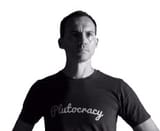Game: Till Nagel's "Yuppie Paradise" (2009, unfinished)
Can somebody please fully develop this game, Yuppie Paradise? Till Nagel's students Florian Kohne, Hans-Peter Kadel, Hannes Hoepfner, and Ferdi Hansen began working on the project in 2009 while completing their degree at the University of Applied Sciences Potsdam, Germany. The goal? "Players take on the role of an investor and can affect the development of a district." As such, they can subsidize artist rent in poor areas. Annihilate the working class, softly but surely. Eliminate cheap drugstores and insert 'vintage' clothing shops, $10 cappuccino coffee houses, and hipster barber shops. Help Mark Zuckerberg buy a McMansion in the Mission. Raise rent systematically & evict to win. Full description below, courtesy of Google Translate (original text in German):
"The term describes the specific redevelopment and gentrification "appreciation" of a neighborhood, which leads to a change in the population structure. A classic first step in the settlement of a poor, unattractive part of the city by means of "Gentrifier" is.These are artists, students and other subcultures, which are attracted by generous living space and low rents. As a result, the district busier, it attracts more residents and tourists to eventually (in search of the latest trend). Investors sense their chance and redevelop the area, rents are rising and the original residents must move out. The prosperity is increasing while the creative freedom that makes the district attractive, are now restricted. At the end of the district is so expensive that the former Gentrifier be displaced by rich newcomers who now look forward to their new, supposedly hip neighborhood." (source)
Alas, Yuppie Paradise was never completed. However, the idea is brilliant and the graphics look great. Even at concept stage, Yuppie Paradise is much more interesting than 95% of commercial games currently on offer. It is certainly more interesting than the "new" SimCity. Update (03/25/2013): Till Nagel sent me a link to the project documentation.
Submitted by Matteo Bittanti (via Julian Oliver, Images: Till Nagel)
